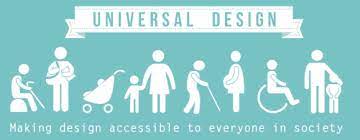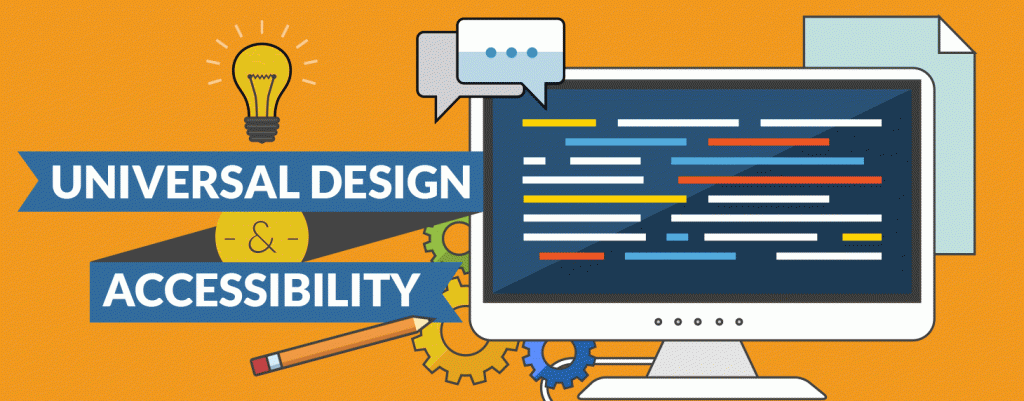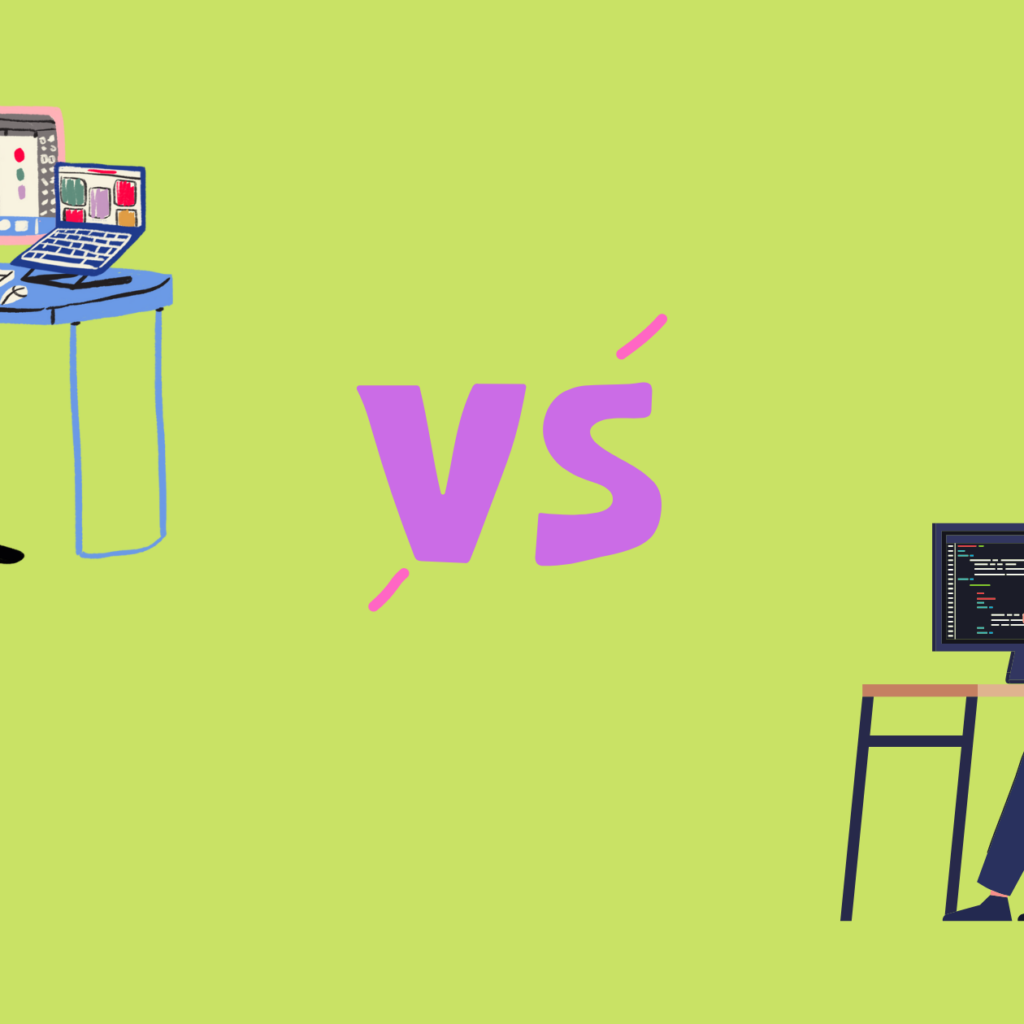Universal Design
Universal design is the procedure of making merchandise that might be handy to human beings with a huge variety of abilities, disabilities, and different characteristics.
All-inclusive Design is the plan and synthesis of a climate so it tends to be gotten to, comprehended, and used the furthest degree conceivable by all individuals paying little mind to their age, size, capacity, or incapacity. A climate (or any structure, item, or administration around there) ought to be intended to address the issues surprisingly who wish to utilize it.

By considering the assorted necessities and capacities all through the design interaction, the universal design makes items, administrations, and conditions that address people groups’ issues. Basically, the universal design is acceptable to design.
Universal Design Examples
– Information/materials gave in different structures (Standard, electronic, enormous print, Braille)
– Height-available help work area
– Accessible sites
– Captioned recordings
– Door handles that don’t need a hold
– Diverse people included in distributions
Accessibility:
The Web is essentially intended to work for all individuals, whatever their equipment, programming, language, area, or capacity. At the point when the Web meets this objective, it is open to individuals with different hearing, development, sight, and intellectual capacity. Accessibility is the act of making your sites usable by however many individuals as could reasonably be expected.

Major 5 Principles of Universal Design
Other than lawful issues, accessibility can profit your clients and improve the brand of your item. That is the reason, here, we will instruct you to anticipate and center your endeavors to plan for availability in any case. Accessibility isn’t the primary thing we consider when we begin planning a site. It is frequently a secret need that we don’t consider until something turns out badly.
The Principles of Universal Design was made by Ron Mace and a gathering of design scientists and experts across the United States. It was distributed in 1997 by NC State University, The Center for Visual Design. The Principles of Universal Design is a significant asset you can use to plan and guide your design interaction shrewdly. The Principles of Universal Design is an establishment for fashioners who set off to make Universal Design items.

Guideline 1: Equitable Use
“The design is valuable and attractive to individuals with different capacities.”
Fair use is the main standard since it is the driver for availability. The guideline elevates you to consider clients with various capacities. At the point when you utilize this rule, you should think about all clients, rather than just the objective clients. At the point when you design for all clients, you will likewise improve the experience for your objective clients and increment the brand worth of your organization.
Rules for Equitable Use
A. Give similar methods for use for all clients: indistinguishable at whatever point conceivable, comparable when not.
b. Abstain from isolating or demonizing any clients.
c. Arrangements for protection, security, and wellbeing ought to be similarly accessible to all clients.
d. Make the design interesting to all clients.
Model: An educator’s site is planned so it is available to everybody, including understudies who are visually impaired and utilizing text-to-discourse programming. Tune in?
Guideline 2: Flexibility being used
“The design obliges a wide scope of individual inclinations and capacities.”
Nobody individual is equivalent to another. A static and unyielding design won’t ever have the option to oblige all clients. The Flexibility being used rule energizes adaptable, versatile, as well as adjustable design. It considers singular inclinations and allows the clients to pick how they will utilize an item. At the point when you give decisions to your clients, they will feel more liberated and more in charge of their experience on your site.
Rules for Flexibility being used
a. Give a decision on strategies for use.
b. Oblige right or left-gave admittance and use.
c. Work with the client’s exactness and accuracy.
d. Give versatility to the client’s speed.
Model: A gallery, visited as a field trip for a course, permits every understudy to decide to peruse or tune in to a depiction of the substance of showcases.
Guideline 3: Simple and Intuitive Use
“Utilization of the design is straightforward, paying little heed to the client’s experience, information, language abilities, or current focus level.”
Straightforward and natural use is one of the objectives of client experience design. It’s not astounding this is likewise one of the universal design standards. Therefore, this rule plans to decrease intricacy and mental or psychological burdens. As indicated by the intellectual burden hypothesis, people can deal with just 3–9 things in a short measure of time when preparing data. To lessen intricacy and diminish psychological burdens, you ought to consistently expect to introduce data somewhere in the range of 3 and 9 things.
Rules for Simple and Intuitive Use
a. Kill superfluous intricacy.
b. Be predictable with client assumptions and instincts.
c. Oblige a wide scope of proficiency and language abilities.
d. Orchestrate data to be reliable with its significance.
e. Give viable provoking and criticism during and after task finish.
Model: Control catches on science gear are marked with text and images that are basic and instinctive to comprehend.
Guideline 4: Perceptible Information
“The design conveys vital data adequately to the client, paying little heed to encompass conditions or the client’s tactile capacities.”
Data is basic to clients. Regardless of whether you convey it utilizing text, pictures, sound, or recordings, ensure the data is not difficult to process and access. At the point when you join this rule into your design, start with your clients. You can sort out how best to give data by thinking about clients’ incapacities, like those with vision or hearing hindrances.
Rules for Perceptible Information
a. Utilize various modes (pictorial, verbal, material) for an excess show of fundamental data.
b. Give the satisfactory difference between fundamental data and its environmental factors.
c. Expand “neatness” of fundamental data.
d. Portray separate components in manners (i.e., make it simple to give guidelines or bearings).
e. Give similarity an assortment of procedures or gadgets that individuals with tactile limits use.
Model: A video show projected in a course incorporates inscriptions.
Guideline 5: Tolerance for Error
“The design limits risks and the unfriendly results of unplanned or accidental activities.”
Mistakes are inescapable among people, thus the proverb “to fail is human”. While we are not planning for atomic innovation, we should plan for a mistake agreeable climate. Universal Design plans to design for all clients and design in expectation for various conditions and clients’ activities. So, this guideline pushes you to think past the screen and how the framework and client will connect.
Rules for Tolerance for Error
a. Orchestrate components to limit dangers and mistakes: most utilized components, generally available, with unsafe components, killed, segregated, or protected.
b. Give admonitions about dangers and mistakes.
c. Give safeguard highlights.
d. Debilitate oblivious activity in undertakings that require carefulness.
Model: Educational programming gives direction and foundation data when the understudy makes an improper reaction.
Conclusion
Utilizing UDI requirements would not kill the requirement for express centers for understudies with handicaps. For instance, you can supply a gesture-primarily based totally conversation translator to an understudy who’s tough of listening to. Nonetheless, making use of extensive layout thoughts in direction arranging ensures complete admittance to the substance for maximum understudies and bounds the requirement for remarkable centers. For instance, making plans for internet property to be had groups as they’re created means that no redevelopment is crucial if a visually impaired understudy attempts out the magnificence.
UD advantages understudies with inabilities yet, in addition, advantages others. For instance, subtitling direction recordings, which offer admittance to tough-of-listening to understudies, is moreover a bonus to understudies for whom English is the next language, to sure understudies with studying handicaps, and people looking the tape in a boisterous climate. Hence, conveying content material in extra manners can enhance steerage for understudies with a collection of studying patterns and social foundations. Thus, Allowing all understudies to method your magnificence notes and duties on a domain advantages understudies with incapacities and each different person. Planning saves time over the lengthy haul.




